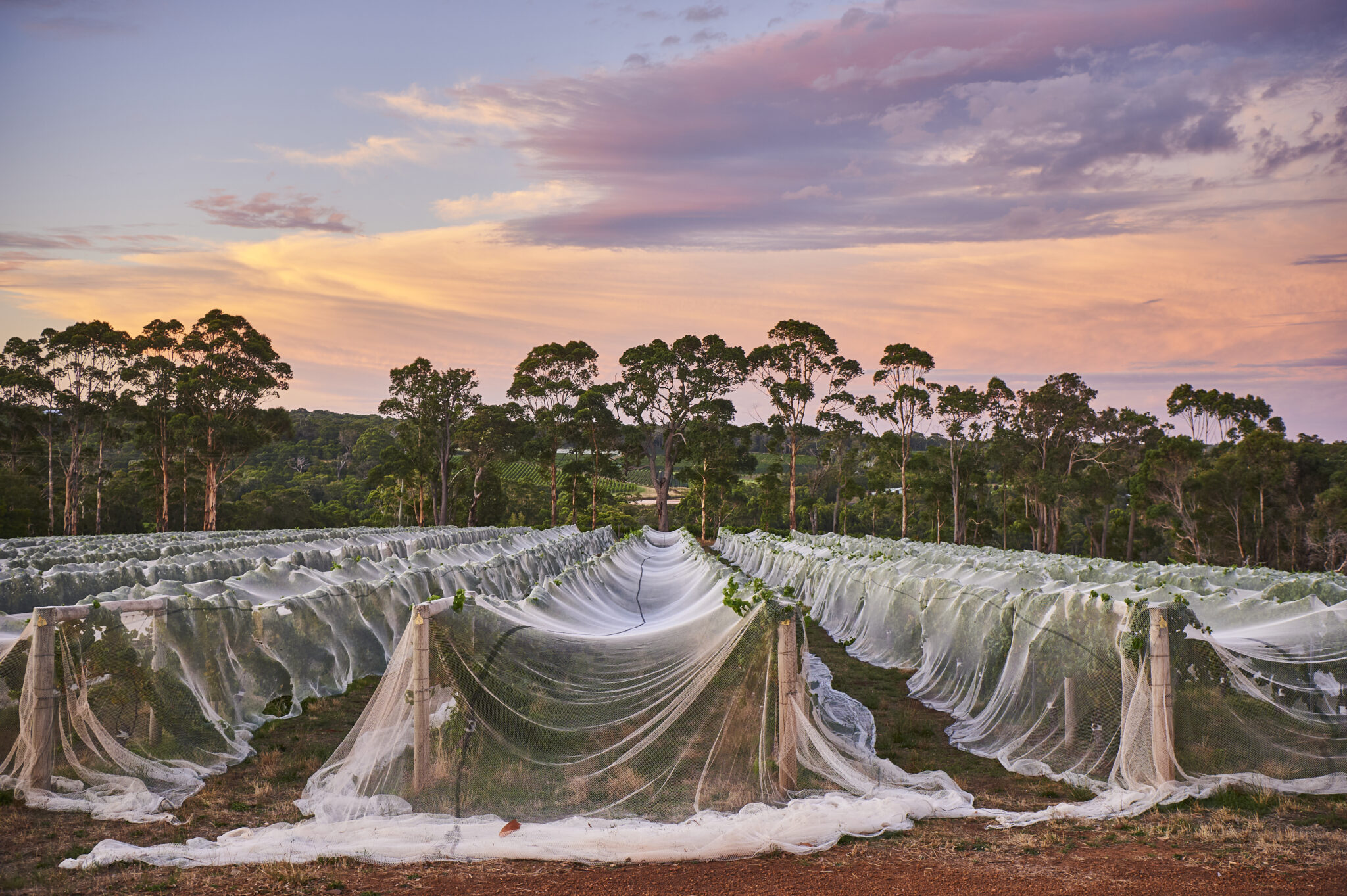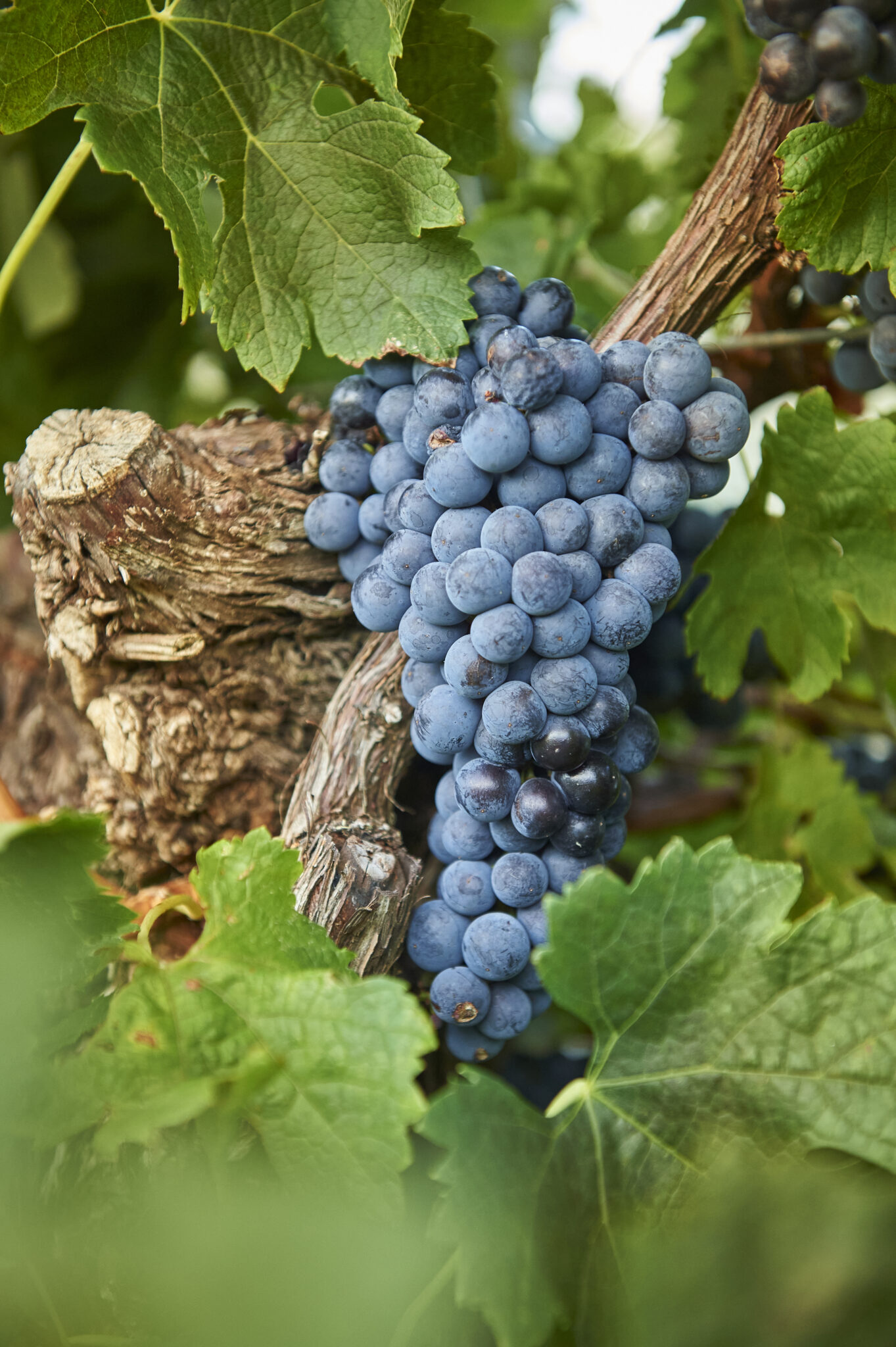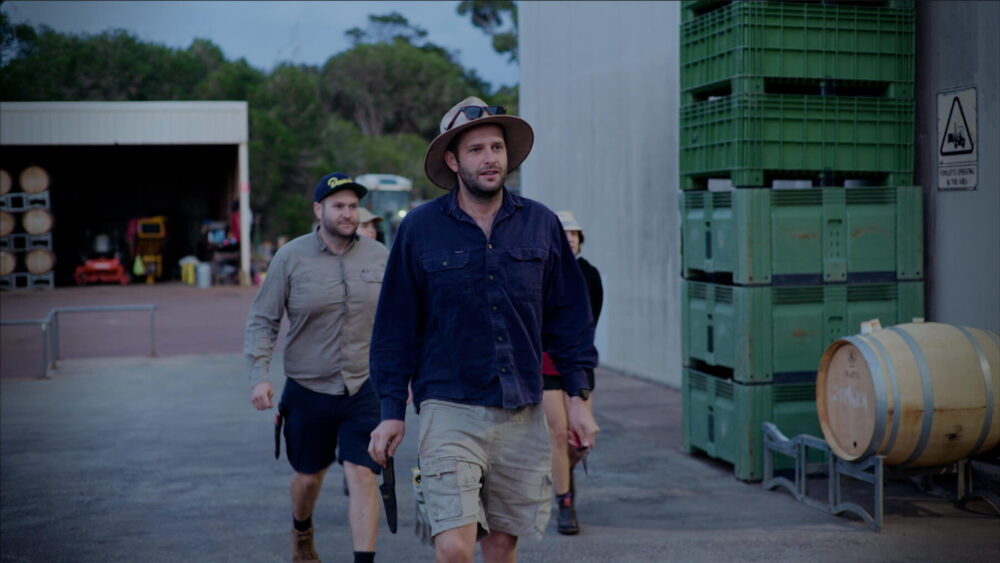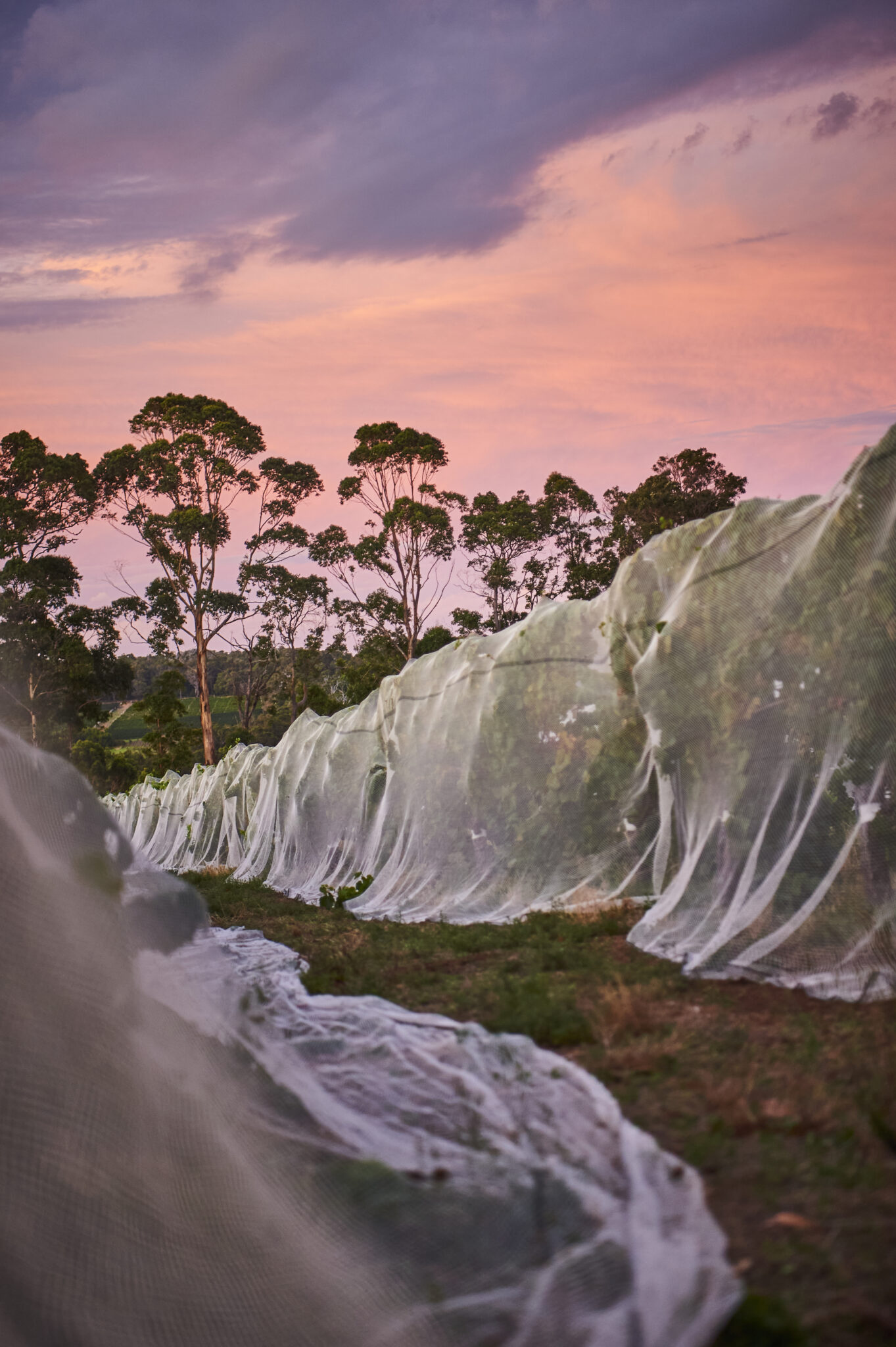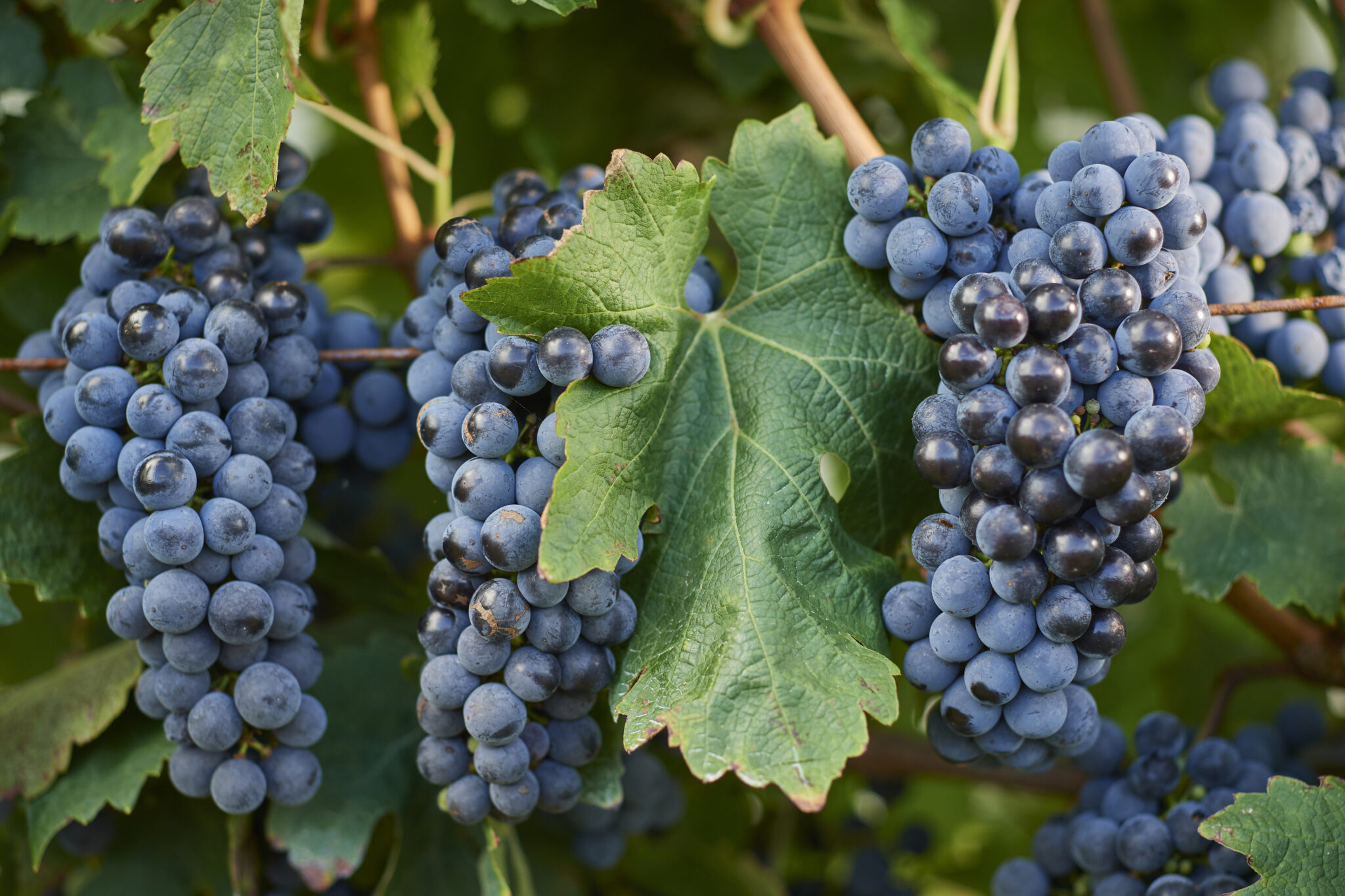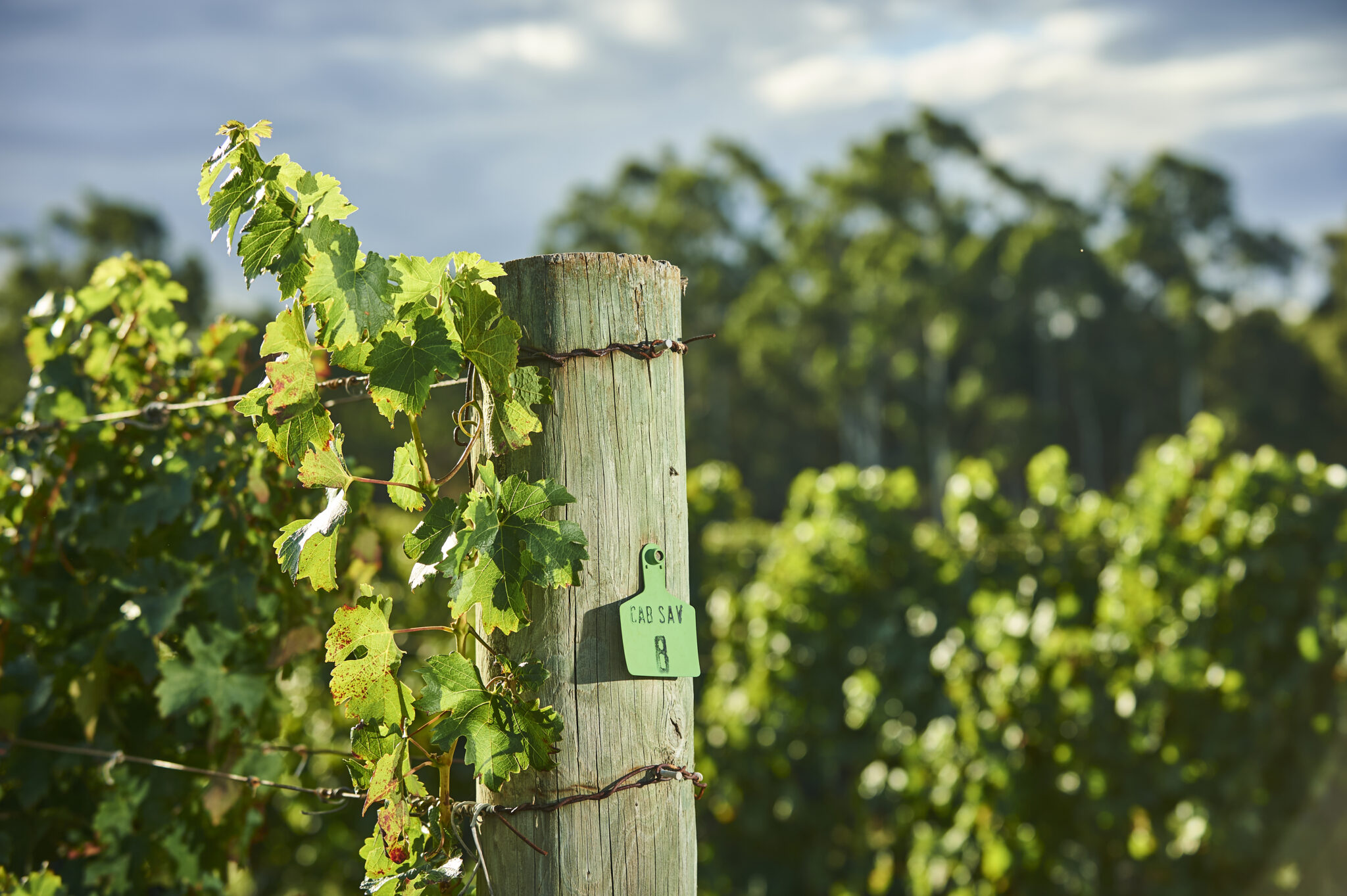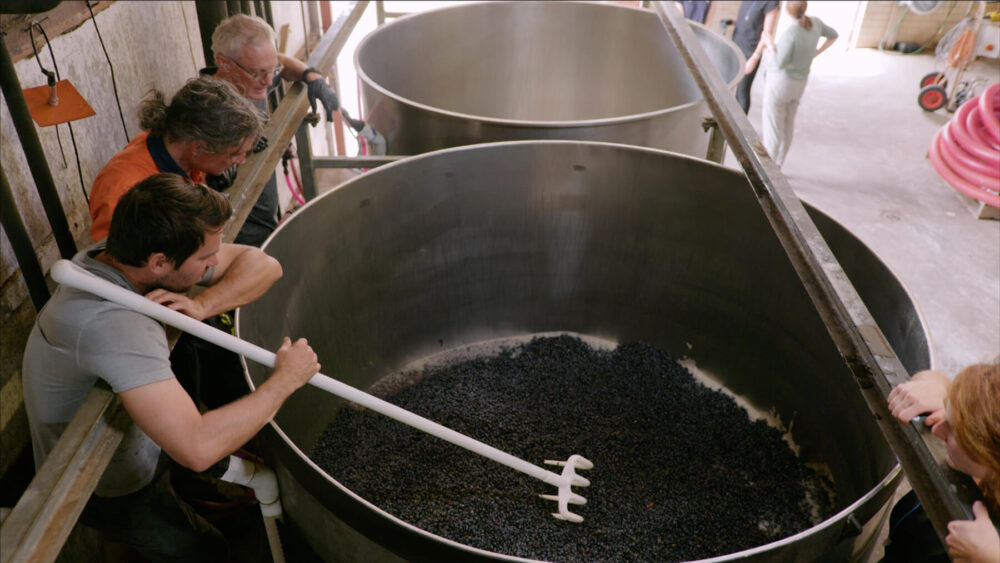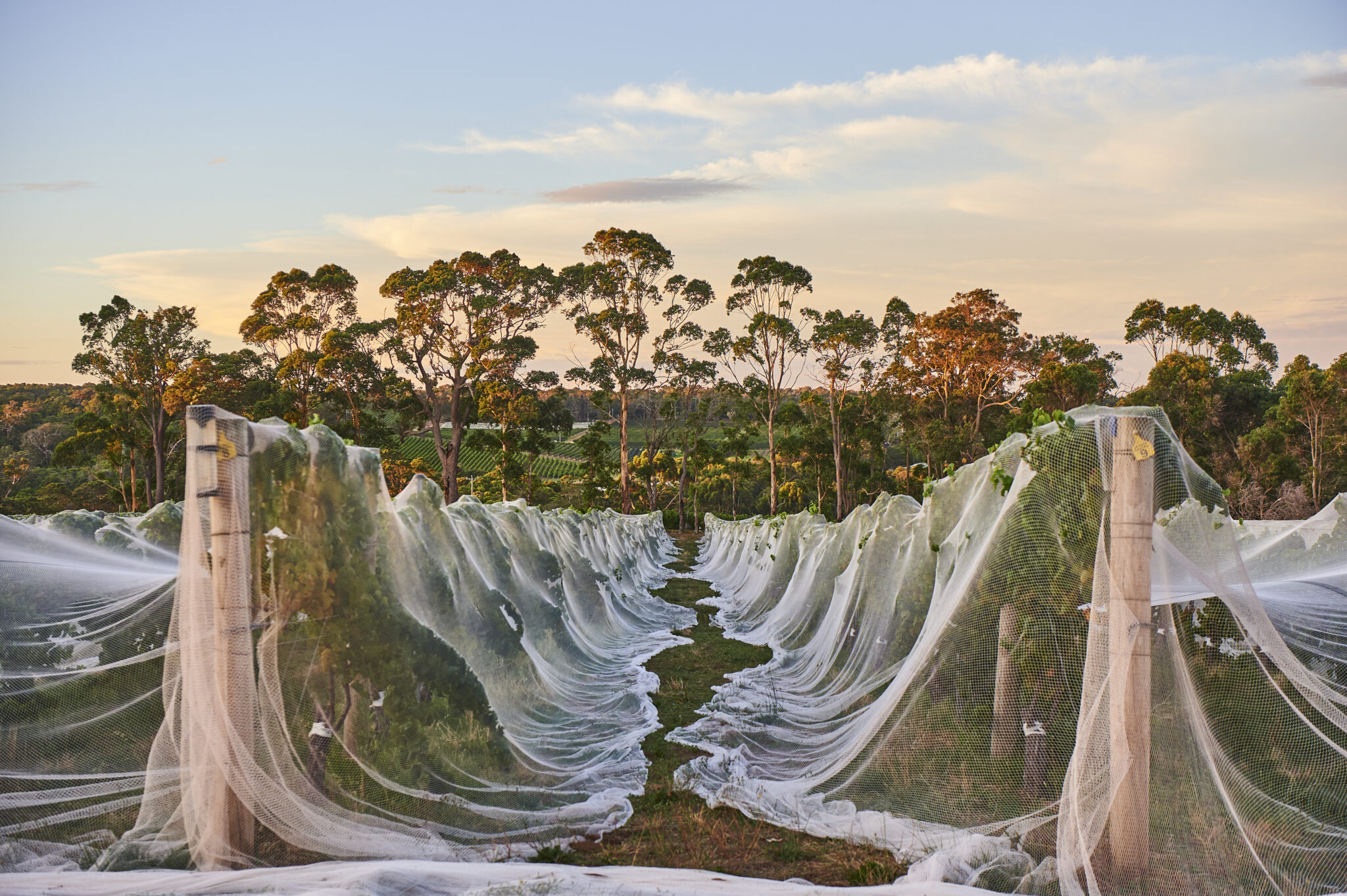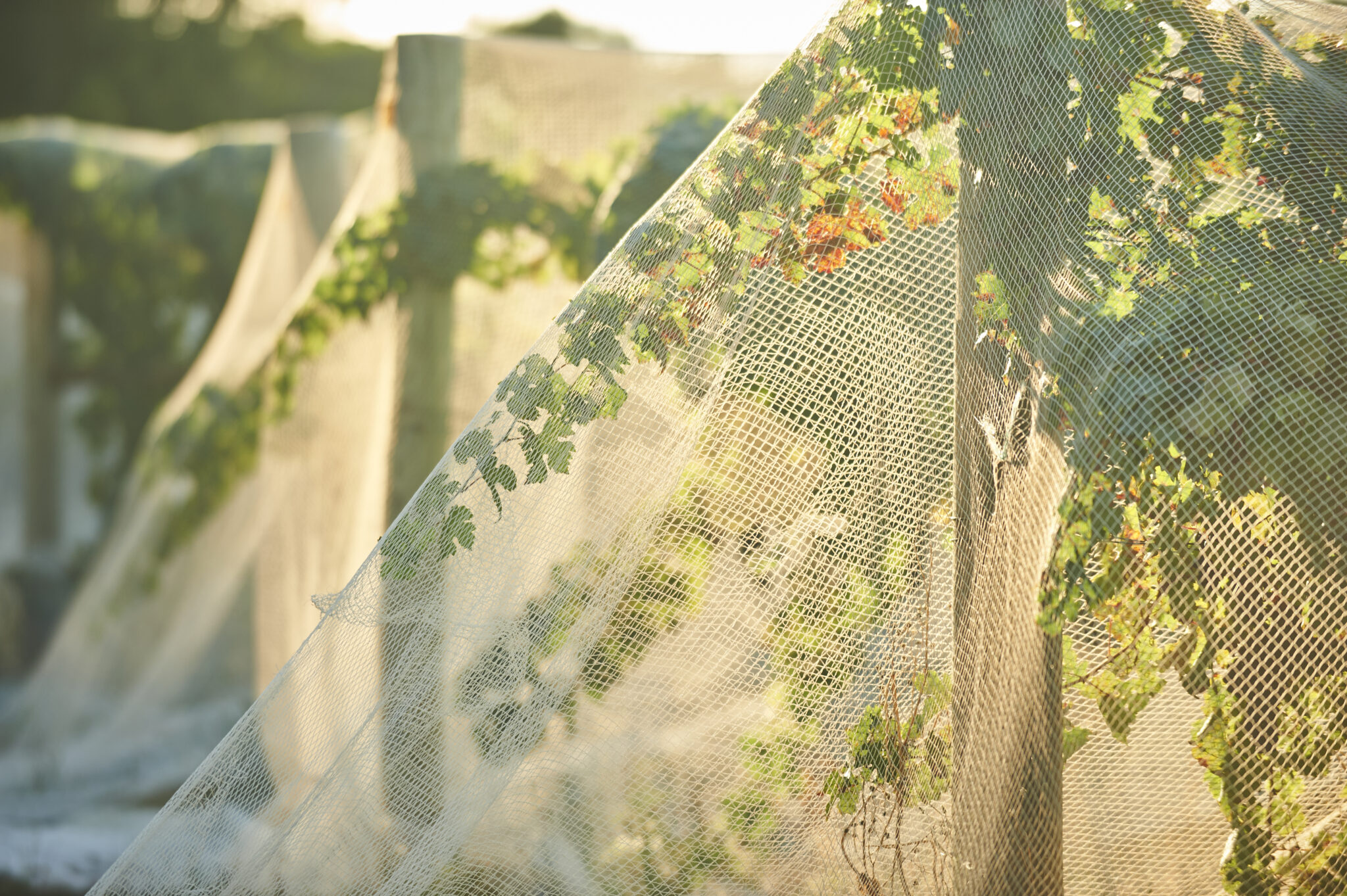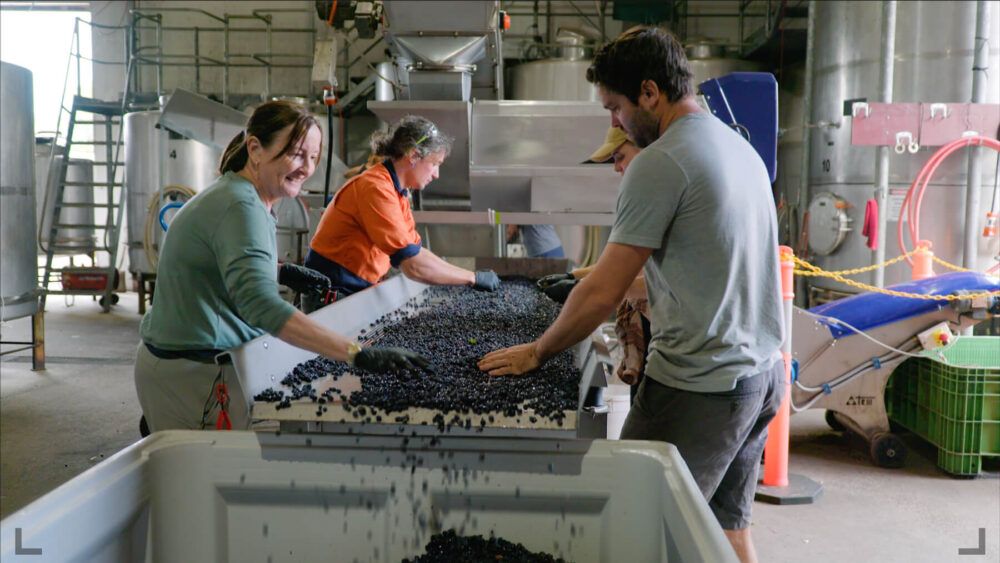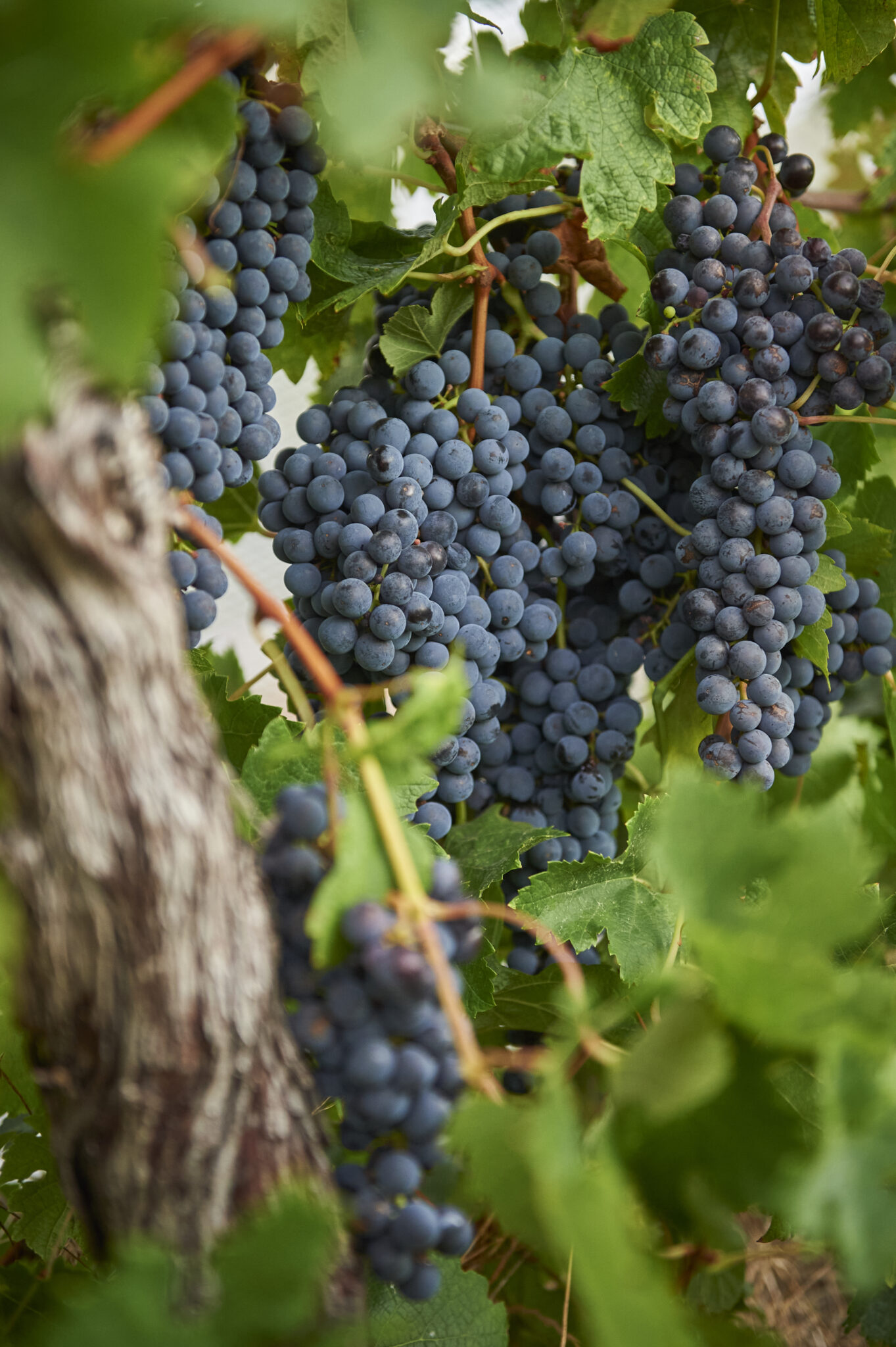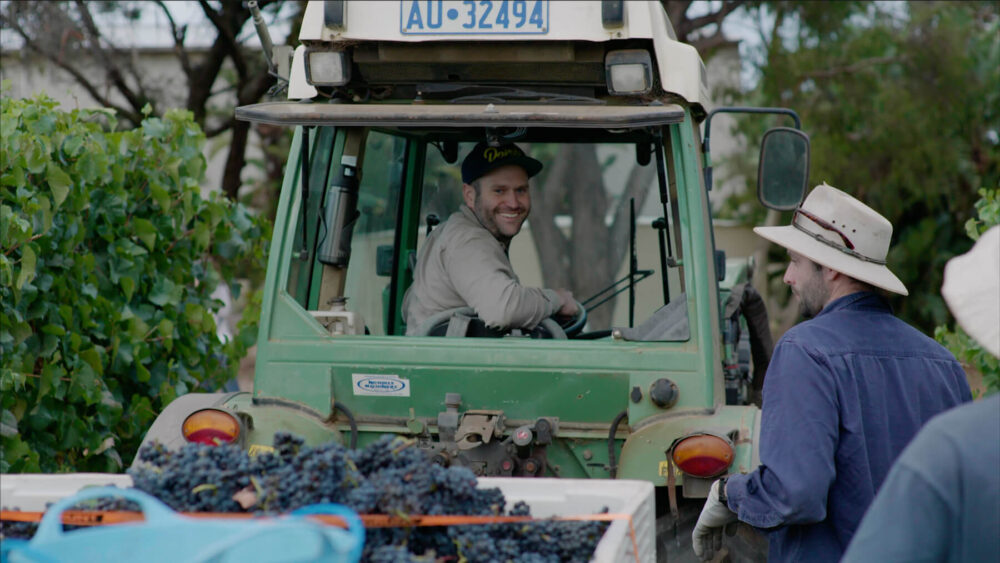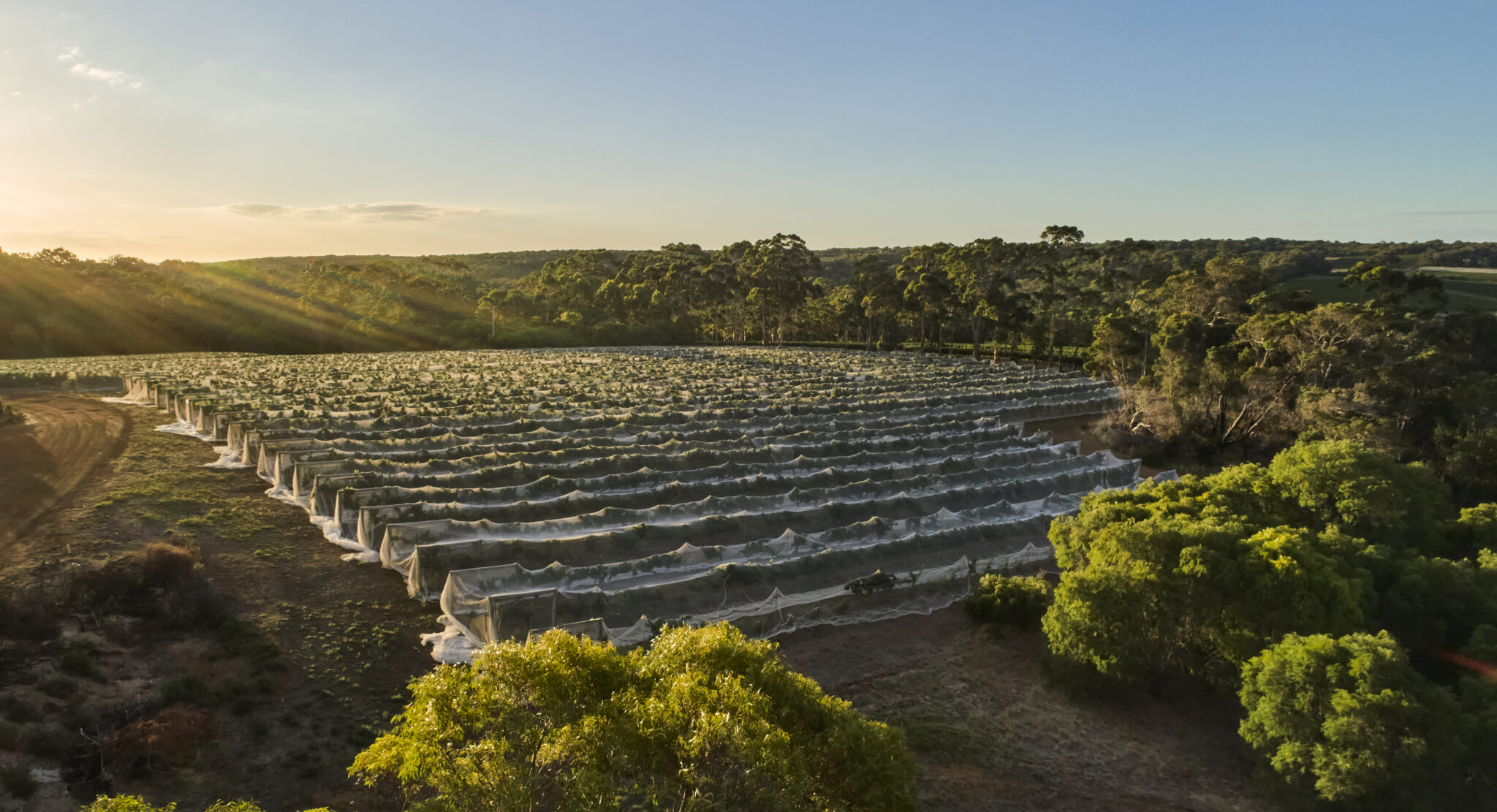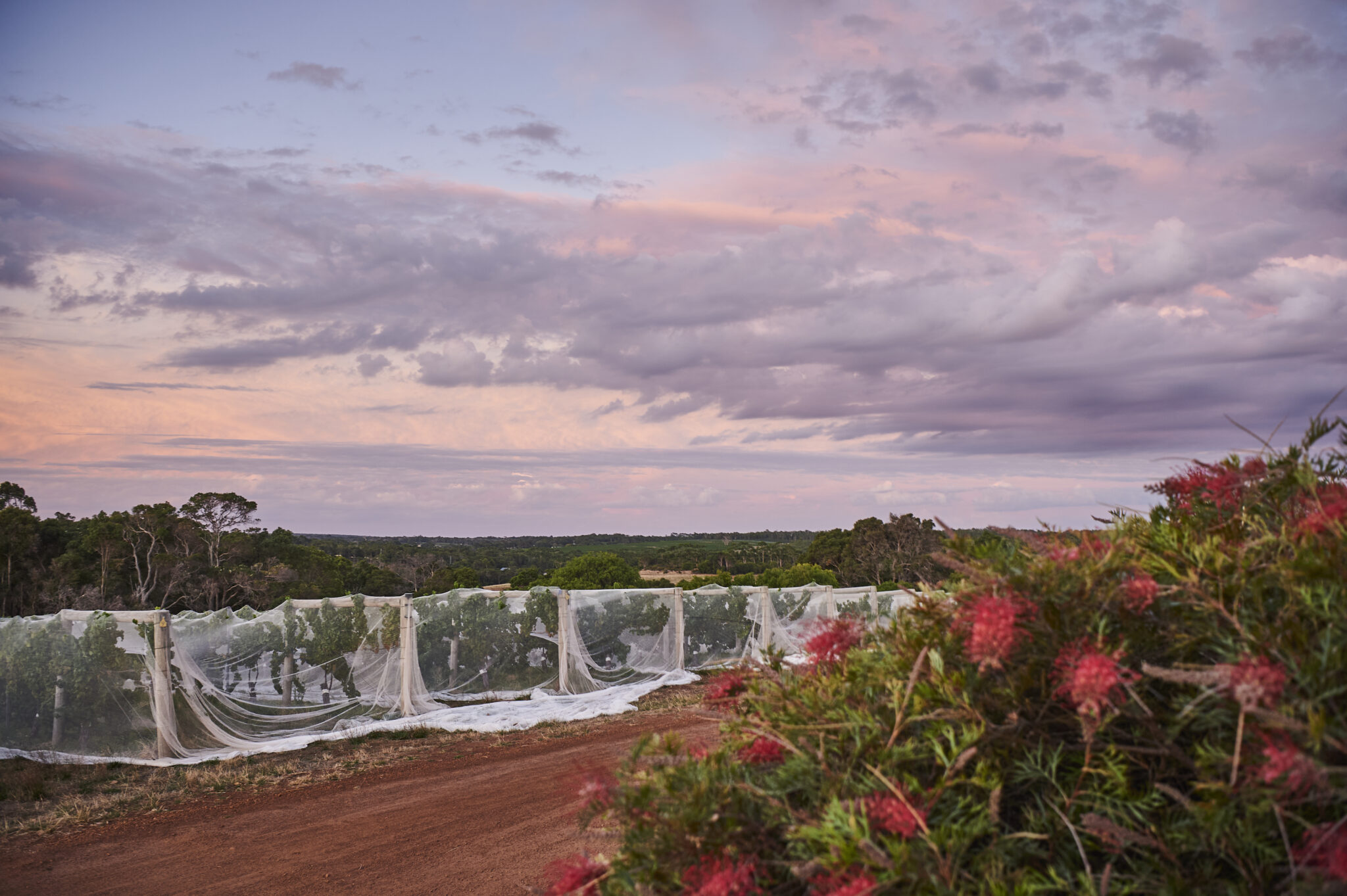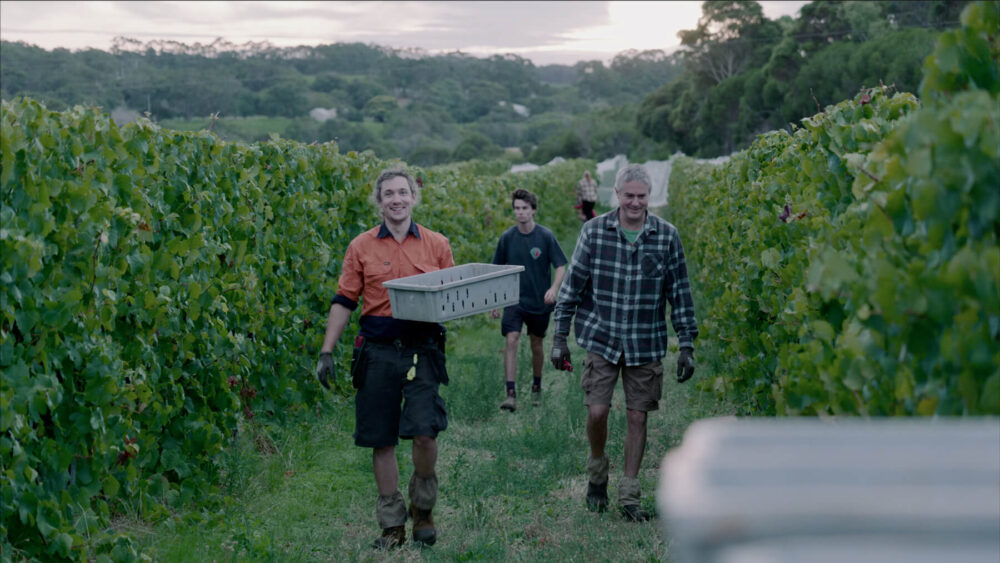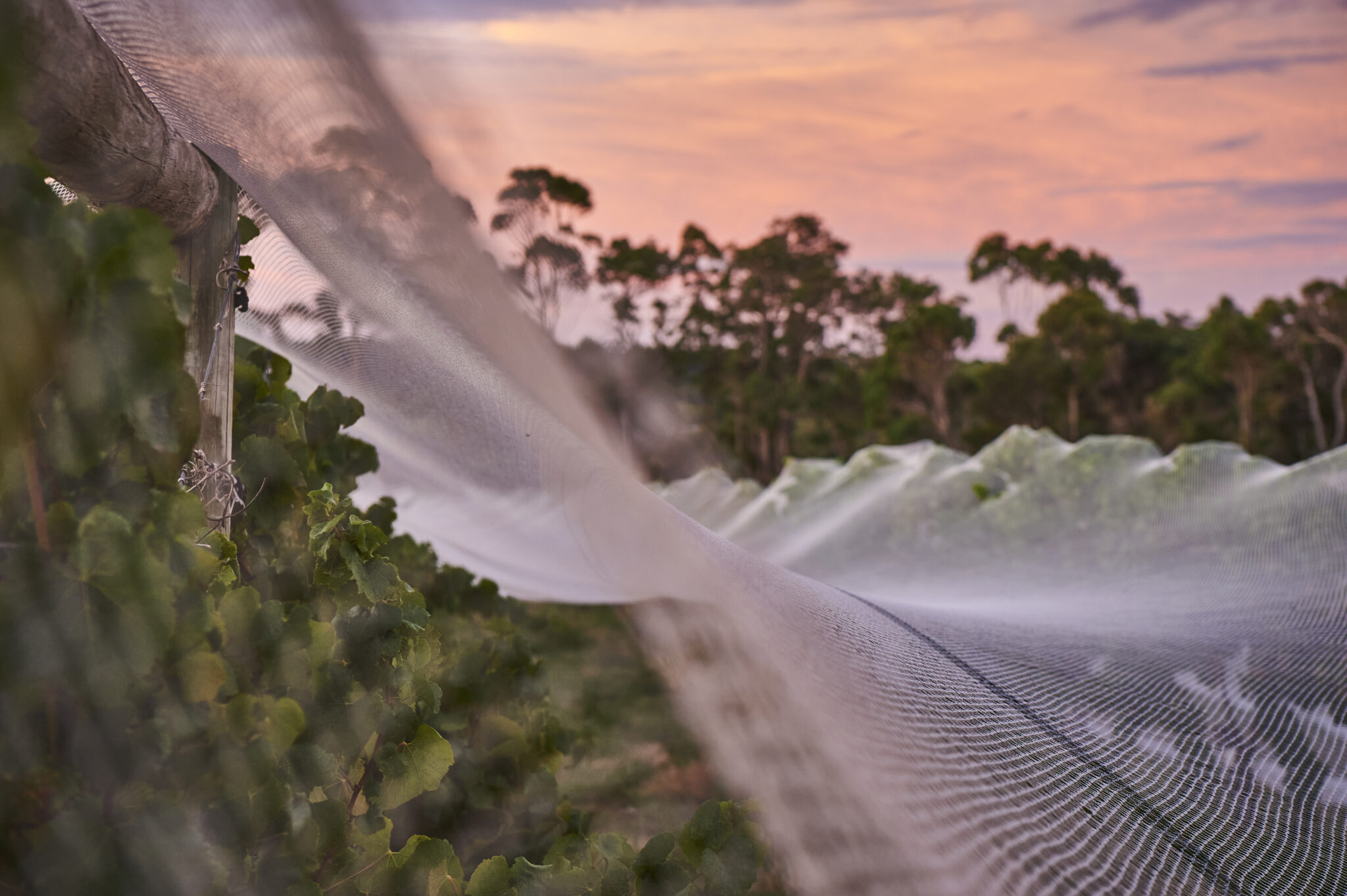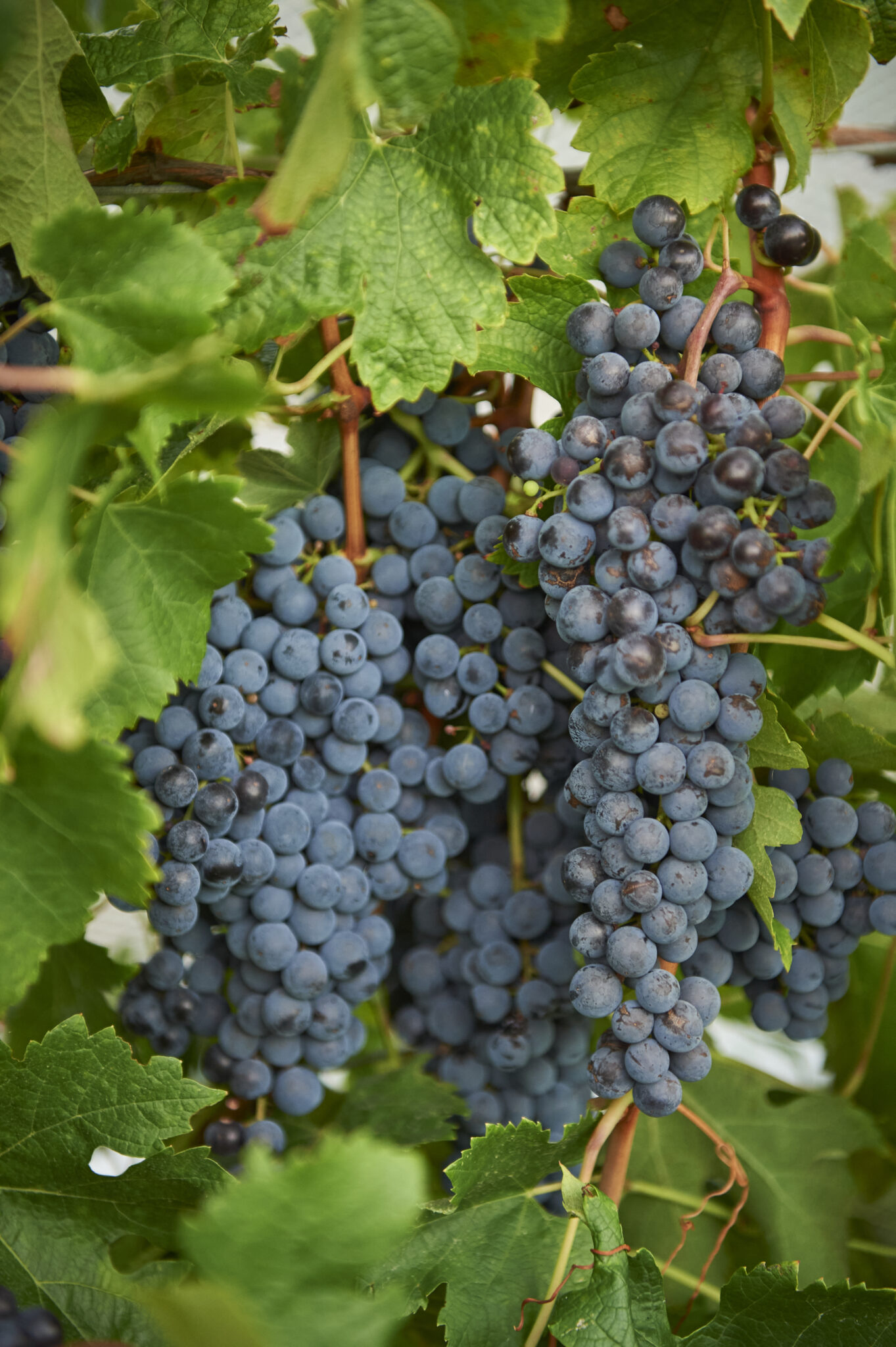Moss Wood Newsletter
Late Spring News Issue # 119 NOVEMBER 2023
2021 ribbon vale reds
Moss Wood Ribbon Vale 2021 Cabernet Sauvignon
Moss Wood Ribbon Vale 2021 Merlot
VINTAGE NOTES
Regular readers of the Moss Wood newsletter will know our best method for assessing the potential quality of our new releases is to look back at similar years from the past. It’s also true that history never repeats but it does rhyme and we see this with different vintages. While the seasons may share similarities, they are never exactly the same. This is very much in our minds as we look back at the 2020-21 growing season.
The calendar year 2020 was very kind to us. The rainfall of 929mm, being 9% below average meant it was slightly dry but still plenty for growing grapes. During the spring, conditions were benign. The vines flowered from 5th November to 7th December and we had 10 days of rain, delivering 77mm. There were some reasonable showers but no heavy winds or hail and the temperatures were mild as well. There were only 6 days when it dropped below 8°C, with coolest minimum being 5.7°C, which occurred on 3rd December and by which time flowering was all but finished.
It almost goes without saying that yields were good. Cabernet Sauvignon, Cabernet Franc and Merlot were all above average, with the latter the best performer at 10%. All varieties had close to average bunch numbers but the quality of the spring conditions shows in the bunch weights, all at least 10% above average.
The season remained largely uneventful until the beginning of February when Mother Nature decided it was time to have a bit of fun with us. Over the next 8 weeks she delivered 215mm of rain, as the remnants of various tropical lows came down the coast of WA.
These events are not uncommon and during Keith’s 45 vintages at Moss Wood, we experienced similar conditions in 1980, 1982, 1985, 1989, 1990, 1992, 1998, 2000, 2015 and 2017. Anyone familiar with our wines will note these vintages are all quite different because the timing and amounts have varied. Contained in the above list are some of our very best wines, so it’s clear that rain isn’t necessarily a quality threat and so it was in 2021.
Ribbon Vale has been part of the Moss Wood family since the 2000 vintage, so this new release has 3 similar siblings and given the cool temperatures, is most like 2017. For the record, this is the vintage that we think mirrors the great 1990, at Moss Wood. However, a notable difference, and improvement since 2017, has been the significant increase in the crop from the new block of the Houghton clone Cabernet Sauvignon, as well as the availability of some Malbec for blending. On the point of the clonal mix, the Houghton clone now provides 76% the blend and takes Ribbon Vale much more into the Moss Wood realm, which is 100%. In our view, this tips the quality balance in favour of 2021.
We don’t live in fear of the rain with Cabernet Sauvignon and its blending varieties because they’re natives of the maritime climate of Bordeaux and have been selected for their good performance in sometimes damp conditions. They all have thick skins which resist splitting and so if a vineyard is carefully managed and remains disease free, the fruit won’t be adversely affected by rot. In addition, unless the rain is accompanied by very cold conditions, they will all achieve full sugar and flavour ripeness.
The 2021 was one of our coolest seasons on record and we still managed to get full ripeness in Cabernet Sauvignon, despite having to play a game of dodge the showers at the end. As each variety approached maturity, we kept an eye on the weather and jumped in to pick before or after the rain. The length of the season shows how patient we had to be. All the varieties needed slightly more than 140 days to get from flowering to harvest, roughly 3 weeks longer than average. We started with Malbec on 6th April and then picked Merlot, Cabernet Sauvignon and Cabernet Franc on 13th, 14th and 17th April, respectively. The important thing to note is that even though temperatures were mild, the length of season meant all varieties kept making progress and both the Cabernet Sauvignon and the Merlot have ripe, soft tannins.
To start the winemaking discussion, we point out that Moss Wood remains a completely hand-run vineyard. All vineyard operations are done by people – cane pruning, shoot positioning and then harvesting. This is something that is very rare in the Australian wine industry because the associated costs are so high. However, what is important is the quality outcomes and our aim, every year, is to deliver the best possible wine the vintage allows us. Modern viticultural and winemaking machinery is very efficient and does a reasonable quality job. However, so far, at least, hand management delivers the best finished wines.

Production notes
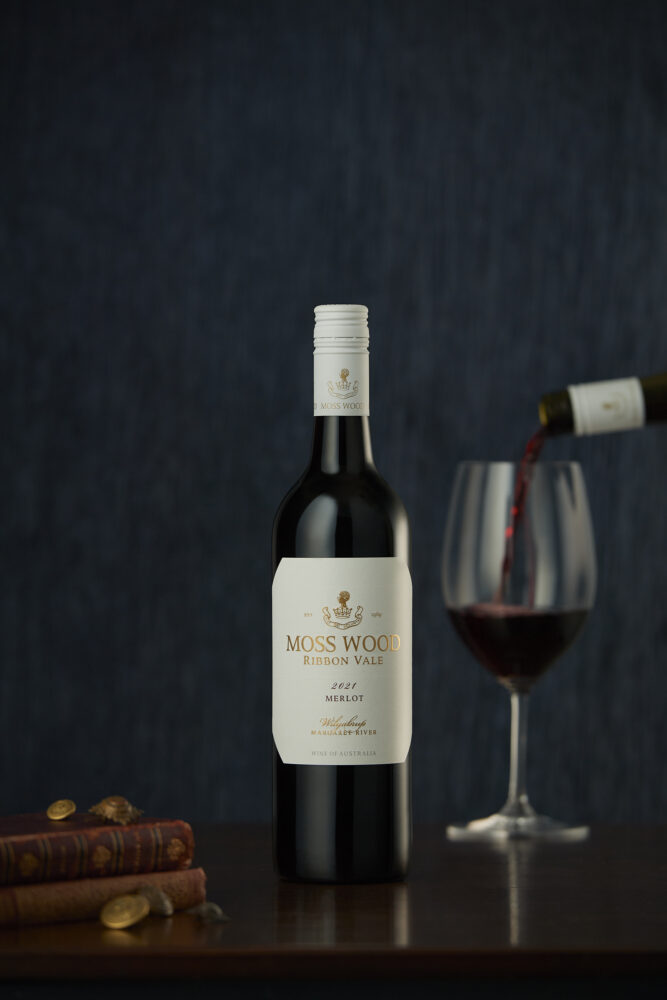
All the fruit was hand-picked and delivered to the winery, where it was sorted and destemmed. Cabernet Sauvignon, Cabernet Franc and Malbec were all transferred to small, open tanks, where they were seeded with multiple yeast strains for primary fermentation. Each batch was hand-plunged 3 times per day and temperatures were controlled to 30°C. Time on skins varied slightly but was typically 14 days, after which each batch was pressed and racked to stainless steel tanks.
The Merlot technique was slightly different. After destemming, the fruit was placed in closed, stainless steel tanks and then chilled to 8°C and allowed to soak for 48 hours. This enhances the colour depth. After this, it’s allowed to warm and seeded for primary fermentation with multiple yeast strains. Extraction was by pump overs, 3 times per day and after 14 days on skins the wine was pressed and racked to stainless steel.
All batches underwent malolactic fermentation and once completed, each was racked to wood. All barrels were 228 litre French oak. For the Cabernet Sauvignon, 15% were new and in the Merlot, 30% were new.
After one year in oak, the individual batches were racked and blended in stainless steel, then returned to barrel. The Cabernet Sauvignon is made up of 94% Cabernet Sauvignon, 2% Cabernet Franc, 2% Merlot and 2% Malbec. The Merlot blend is 86% Merlot, 7% Cabernet Franc and 7% Cabernet Sauvignon. Regular readers will note we are continuing with the change first introduced with the 2020 Merlot, bringing more Cabernet Sauvignon into the blend for greater aroma and flavour complexity, not to mention palate weight and tannin balance.
After just over 2 years in oak, both wines were racked and blended in stainless steel for the final time. Fining trials were carried out but neither the Cabernet Sauvignon or Merlot were improved, so both remained unfined. They were then sterile filtered and bottled on 1st August, 2023.
Moss Wood Ribbon Vale 2021 Merlot
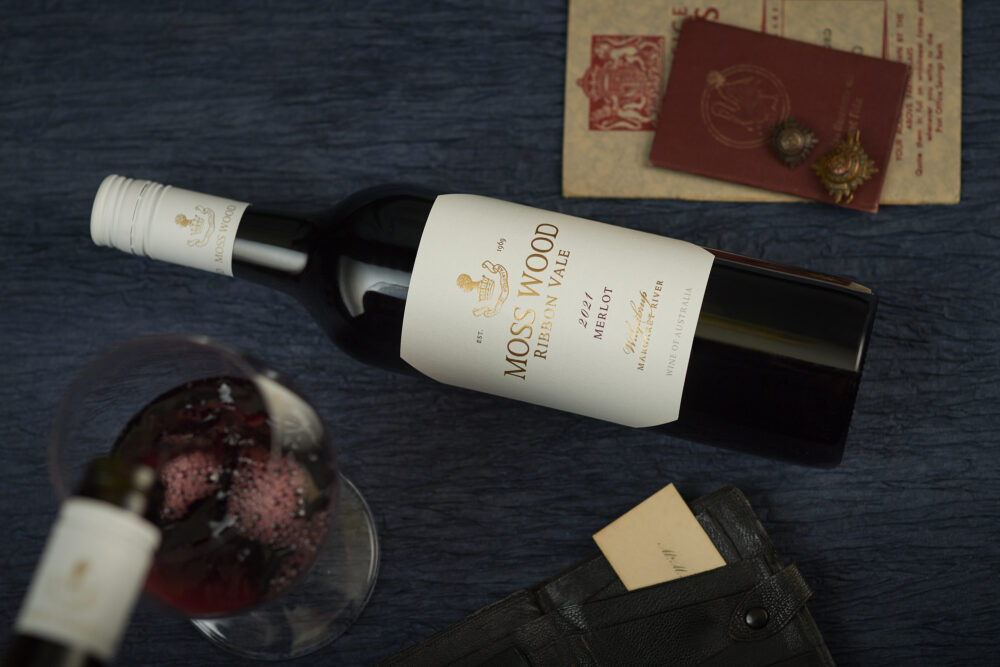
Tasting Notes
Colour and Condition:
Deep brick red and ruby hue; bright condition.
Nose:
Bright fruit aromas dominate, combining red currant, plum, blackberry and cherry, with dark jubes and fruit leather but it is also complex, with an earthy background of tarriness and black olive and some spicy, charry oak.
Palate:
The immediate impact is one of bright generous black fruits of blackberry, plum and cherry and even a touch of licorice. Underneath is a firm but well-balanced structure. Good acidity supports the lively fruit notes and then the wine finishes with firm, chalky tannins, some dark chocolate and soft, toasty oak.
CELLARING
Looking back over the history of Merlot at Ribbon Vale, it has made some of its best wines in the cooler years. The 2002 and 2006 vintages are classic examples of this and both continue to age very well and it’s hard for us to believe the former has now celebrated its 21st birthday. The 2021 should continue this theme and, given the additional length of the season and associated improvement in flavour and tannin ripeness compared to the earlier vintages, our expectation is we are looking at perhaps our best cellaring prospect so far. It will need at least a decade to reveal the beginning of the bottle bouquet of chocolate, coffee bean and tar and will require a further ten years before this dominates. In the meantime, the palate will gradually soften and the choice of drinking window will depend on personal preference. For those looking for brighter fruit notes and firmer tannin, it should be consumed before ten years old. However, consumers wanting a softer and more rounded palate need to be more patient and wait until the wine has at least had its 15th birthday.
| Wine Facts | |
|---|---|
| Median Harvest Date | Merlot – 13th March, 2021 Cabernet Franc – 17th April, 2021 Cabernet Sauvignon – 4th April, 2021 |
| Mean Harvest Ripeness | Merlot – 12.8⁰ Be Cabernet Franc – 14.1⁰ Be Cabernet Sauvignon – 12.8⁰ Be |
| Yield | Merlot – 10.60 t/ha Cabernet Franc – 8.64 t/ha Cabernet Sauvignon – 7.10 t/ha |
| Ripening Time from Flowering to Harvest | Merlot – 143 days Cabernet Franc – 146 days Cabernet Sauvignon – 142 days |
| Bottled | 1st and 2nd August 2023 |
| Blend | 86% Merlot 7% Cabernet Franc 7% Cabernet Sauvignon |
| Alcohol | 13.50% |
Moss Wood Ribbon Vale 2021 Cabernet Sauvignon
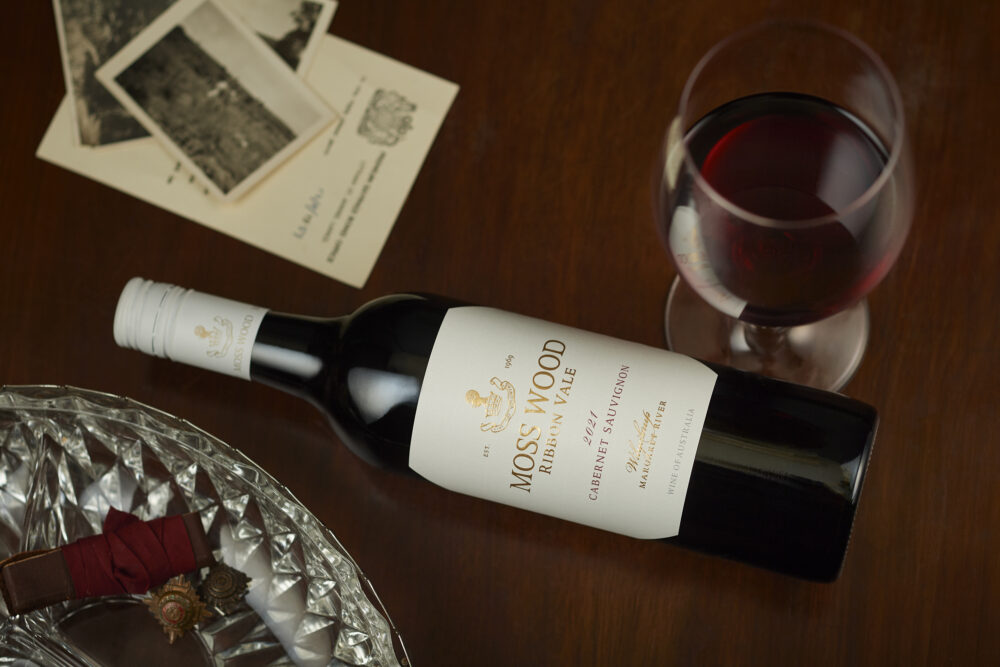
Tasting Notes
Colour and Condition:
Deep brick red hue; brilliant condition.
Nose:
We noted in our production comments the Ribbon Vale 2021 Cabernet Sauvignon is now dominated by the Houghton clone and this makes it quite different from previous vintages. This immediately evident on the nose, which displays the classic Houghton fruit aromas of blueberries and violets and these combine with blackberry, raspberry and a bit of plum, courtesy of the Malbec. Sitting beneath the floral array are Cabernet’s usual complex notes cedar, tobacco and tar and some light, toasty oak.
Palate:
The theme of the vintage continues here and it is immediately obvious the addition of the Houghton clone has changed the style. The wine now presents generous flavours of red current, blueberry and boysenberry, which are bright and generous, making the wine long and round. The acidity is still fresh and the tannins firm but the balance is excellent. The wine finishes with some soft oak notes.
CELLARING
The first we note here is this wine sits very much in the “yummy” category and with its generous young fruit flavours, it is enjoyable now. However, the depth, complexity and structure are such that it will age in the classic Wilyabrup Cabernet Sauvignon fashion. It will take around 15 years to show reasonable development and a further 10 years after that to reach full maturity. Beyond that, it is somewhat difficult to predict but using our early Moss Wood wines as a guide, it should age comfortably for at least 40 years.
| Wine Facts | |
|---|---|
| Median Harvest Date | Cabernet Sauvignon – 4th April, 2021 Cabernet Franc – 17th April, 2021 Merlot – 13th March, 2021 Malbec – 6th March, 2021 |
| Mean Harvest Ripeness | Cabernet Sauvignon – 12.8⁰ Be Cabernet Franc – 14.1⁰ Be Merlot – 12.8⁰ Be Malbec – 13.0° Be |
| Yield | Cabernet Sauvignon – 7.10 t/ha Cabernet Franc – 8.64 t/ha Merlot – 10.60 t/ha Malbec – 3.98 t/ha |
| Ripening Time from Flowering to Harvest | Cabernet Sauvignon – 142 days Cabernet Franc – 146 days Merlot – 143 days Malbec – 142 days |
| Bottled | 4th August, 2022 |
| Blend | 94% Cabernet Sauvignon 2% Merlot 2% Cabernet Franc 2% Malbec |
| Alcohol | 13.50% |
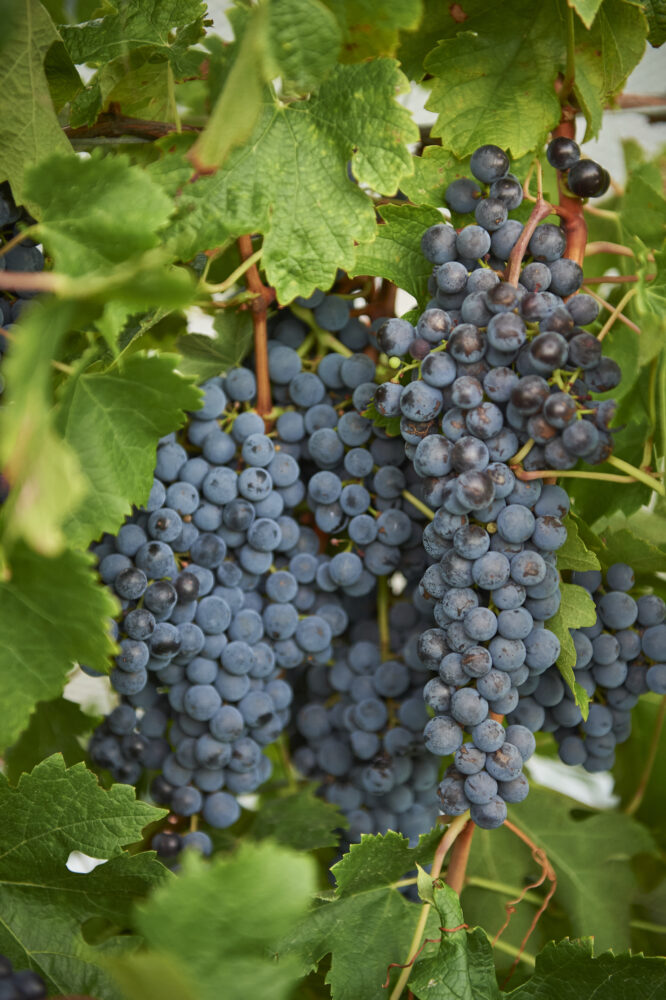
New Merlot Clones
In our discussion of the Ribbon Vale 2021 Merlot, we mentioned the change in style associated with the new blend, as part of our on-going improvement to that wine. We’re also making significant changes in the vineyard, where we’ve introduced 3 new clones.
Western Australia has always had very strict quarantine rules and this has generally worked well in keeping viticultural pests and diseases out of the state. For example, the root parasite, phylloxera, is still not present in WA, despite causing significant issues in just about every other wine producing nation, Australia included. A benefit of this is we are one of the very few regions in the world able to grow the European Vitis vinifera varieties on their own roots, rather than as grafted vines.
On the downside, the strict regulatory environment means the introduction of new clones has been a relatively slow process. As a result, some of our vineyards are planted with material that is now outdated. In the case of Merlot, Ribbon Vale is planted with the D3V14 clone, introduced into Australia from the University of California at Davis, a source of much clonal material, in 1967. In that era, selection was based primarily on yields and so D3V14 crops very reliably, so much so, that we need to be mindful of not allowing it to over-produce. However, in the intervening 56 years, significant advances have been made and newer selections offer better fruit characters, as well as yields.
As much as we’re happy with the quality of Ribbon Vale Merlot, it can always be improved, and we’re confident the new clones will be beneficial and so in 2022 we grafted 3 of them onto our existing stock. Their numbers are 181 and 343, selected in France, and Q45-15, selected in California. The first batches from these vines will be made in 2024 vintage and we look forward to updating you on their impact.
VINEYARD UPDATE FOR SPRING 2023
Any readers who are farmers, or have any connection with agriculture, would understand why we are very cautious about making assessments of how the growing season is faring. There are a multitude of expressions to describe this but “don’t count your chickens before they hatch” is as good as any. Regardless of tempting the fates, we’re pleased to report a very good season, so far. Annual rainfall has been good, although down by around 9%, meaning soil moisture is excellent and the vines have plenty of water. The rain has been delivered without any strong winds or hail and so the shoots and leaves are in excellent condition. At the time of writing, flowering is just getting underway and the current forecasts suggest we’ll get a number of warm, dry days. If that’s the case, we should be on our way to good crops in 2024. Touch wood!
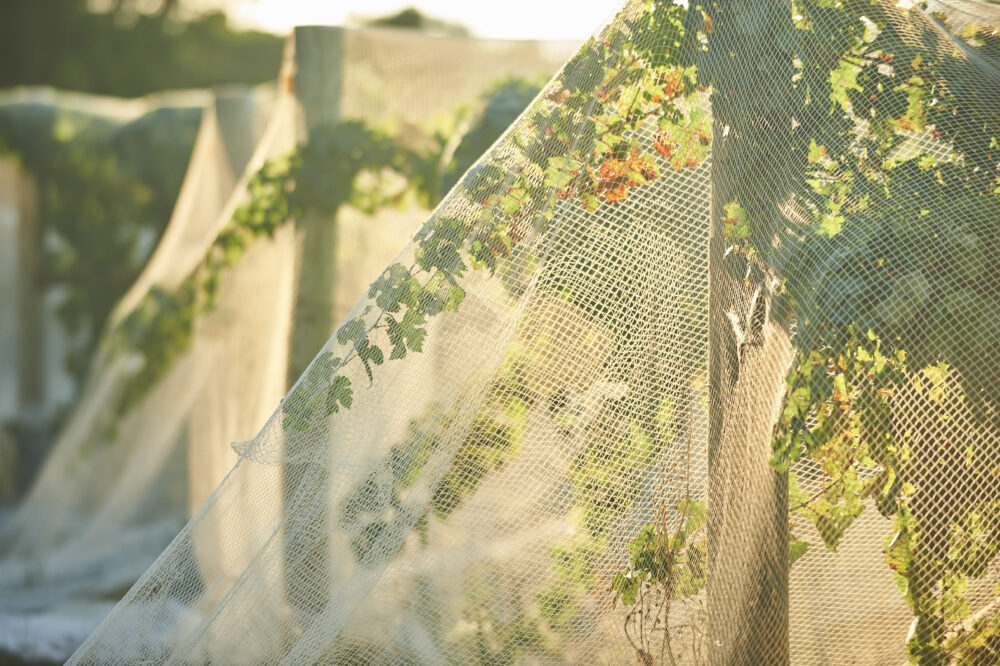
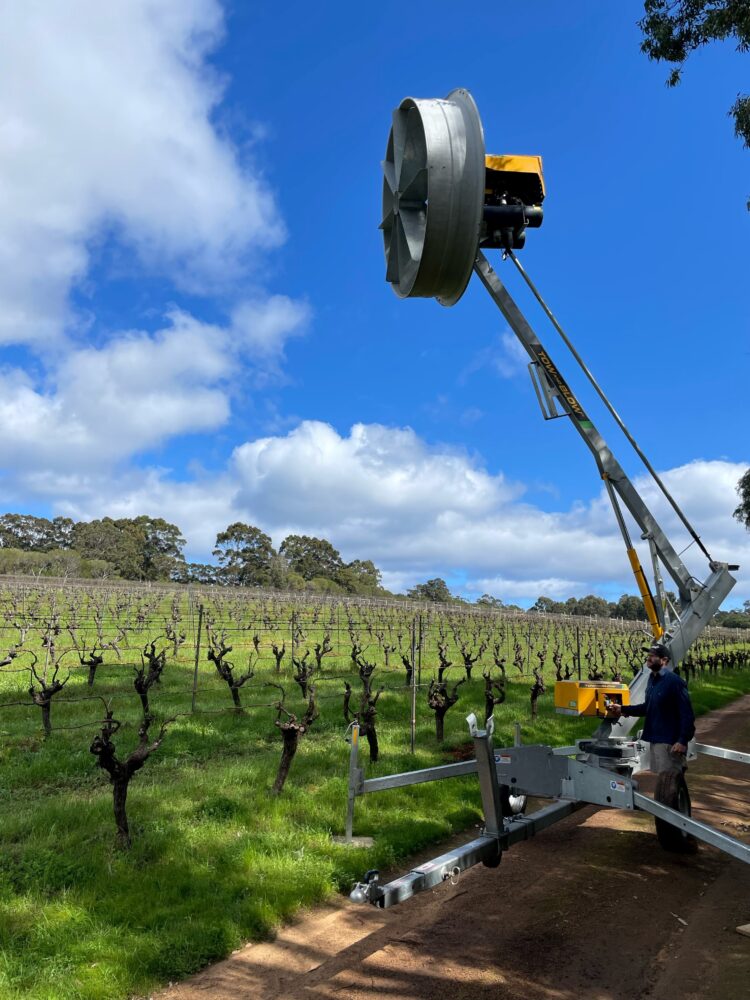
The Frost Machine
While noting the season has been good so far, we must also share the news of our most recent purchase of vineyard equipment. Anyone who might have driven along Metricup Road next to Moss Wood may have noticed something that looks like a mechanical giraffe, with a big fan for a head, lying in a trailer beside the Old Block Chardonnay. This is our new anti-frost machine, a “Tow and Blow,” imported from New Zealand.
The machine consists of a 2 metre diameter, oscillating fan, sitting atop an 8 metre tower. It has its own automatic setting and when temperatures drop low enough, it starts up and blows the warmer air up at fan height, down on to the vines, thereby reducing the risk of frost damage. When in operation, it’s quite a sight and sounds a bit like a propellor aircraft on final approach.
Although the Margaret River region has a strongly maritime climate, and frost risk is, therefore, minimal, our topography means that Moss Wood is frost prone at its eastern end. Unfortunately, this is where our best Chardonnay block sits, and in 2018, the most recent such event, we lost roughly 80% of its crop. Since frosts occur roughly every 5 years, that has always been just long enough for us to start to forget and we’ve done nothing about them. However, after the last one, we were determined to be proactive and in August this year, our Tow and Blow was delivered. This turned out to be fortuitous because on 6th September, the region experienced a significant frost but, courtesy of the machine, the temperature in our Old Block Chardonnay only dropped to -0.5°C and no frost formed. A quick estimate suggests we would have lost at least half the crop, meaning the machine effectively paid for itself in one night. It’s always good to have a win!
© FRANCES ANDRIJICH
© BEN DELFS
Order
OUR WINES:
Contact
MOSS WOOD:
Location: 926 Metricup Road, Wilyabrup WA
Postal: PO Box 225, Cowaramup WA 6284
Phone: +61 8 9755 6266
Fax: +61 8 9755 6303
Follow us on
SOCIAL MEDIA:

